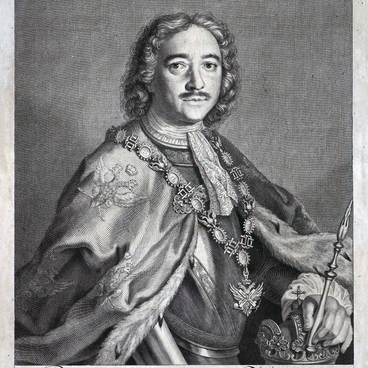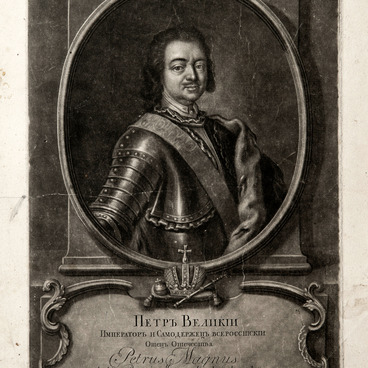In 1697–1698, Peter I took a trip across European cities. The goal of the Grand Embassy diplomatic mission was to perform negotiations and to study European achievements. The tsar-carpenter was particularly interested in how the English and the Dutch built their ships.
In 1697, in the Dutch city of Utrecht, Peter met with William III of Orange, King of England and Stadtholder of the Netherlands. It was then that William’s court painter, Godfrey Kneller, painted one of the most successful portraits of the Russian monarch.
Godfrey Kneller was born in 1646 in Lubeck, Northern Germany. He studied in Amsterdam with Ferdinand Bol and Rembrandt Harmenszoon van Rijn; and he spent several years studying the art of Tintoretto and Titian in Venice. By the end of the 17th century, his works were very popular among the English nobility. In particular, he captured at least 40 members of the Kit-Cat Club of the Whigs. To do this, the artist created a new portrait format slightly smaller than half-length, which was named after the club (kit-cat portrait).
Kneller painted from life. He painted only heads and he was very quick. He entrusted painting torsos and backgrounds to his assistants and students, as it did not require such high skills and often relied on cliches. One of the mysteries of the portrait of Peter the Great is directly linked to the way Kneller made his portraits.
A first-class portrait artist, Kneller was not that big of a ship connoisseur, so the fleet in the background was painted by Willem van de Velde Jr, a talented Dutch marine painter. It is likely that Peter himself chose such a background as if anticipating the creation of his own maritime power.
Peter’s contemporaries noted the exceptional authenticity of the portrait. For a long time, the painting decorated the official residences of the English royal family in Windsor and Hampton Court Palace. It still resides in the Royal painting collection.
At least 50 engravings were created from Kneller’s original painting, though not in full-length, like the original, but in half-length engravings. The creator of one of them was Pieter van Gunst (1658/1659–1732), a Dutch draftsman and engraver, a native of Amsterdam, who in addition to his hometown worked in Nederhost and London.

